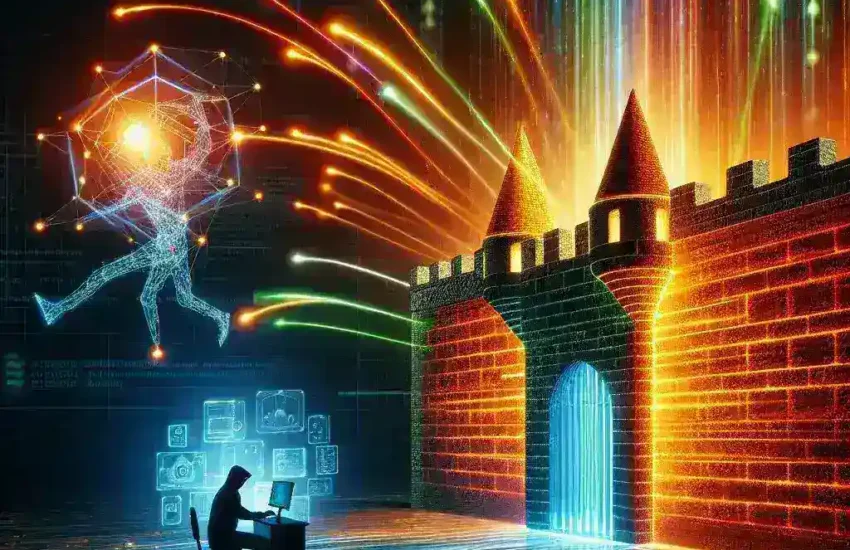Introduction
Firewalls serve as a critical barrier between a trusted internal network and untrusted external networks, such as the internet. They are designed to monitor and control incoming and outgoing network traffic based on predetermined security rules. However, like any security system, firewalls are not impervious to vulnerabilities. Hackers continuously seek ways to exploit these weaknesses to gain unauthorized access, steal sensitive information, or disrupt services. This article delves into the common weaknesses in firewalls and the techniques hackers employ to exploit them, along with strategies to bolster firewall security.
Understanding Firewalls
Firewalls are network security devices that filter traffic between different networks or devices based on a set of security rules. They can be hardware-based, software-based, or a combination of both, and they operate at various layers of the OSI model. By controlling the flow of data, firewalls help prevent unauthorized access and ensure that only legitimate traffic is allowed through.
Common Firewall Weaknesses
Misconfiguration
One of the most prevalent issues with firewalls is improper configuration. Misconfigured firewall settings can create unintended open ports, allow unauthorized protocols, or fail to block malicious traffic effectively. Human error during setup or maintenance can lead to significant security gaps.
Outdated Software
Firewalls, like all software, require regular updates to patch known vulnerabilities. Running outdated firewall software can leave systems exposed to exploits that have been addressed in newer versions. Neglecting updates is a common oversight that hackers can exploit.
Default Credentials
Many firewalls come with default usernames and passwords that are widely known or easily guessed. Failing to change these credentials can allow attackers to gain administrative access to the firewall, giving them the ability to modify settings and bypass security measures.
Inadequate Rules
Firewall rules dictate what traffic is allowed or blocked. If these rules are too permissive, they can let in malicious traffic. Conversely, overly restrictive rules can disrupt legitimate operations. Striking the right balance is essential for effective firewall protection.
Techniques Hackers Use to Exploit Firewalls
Packet Sniffing
Packet sniffing involves intercepting and analyzing the data packets traveling through a network. By capturing unencrypted traffic, hackers can glean sensitive information or identify vulnerabilities in firewall configurations that can be exploited.
Denial of Service (DoS) Attacks
DoS attacks aim to overwhelm a firewall with excessive traffic, causing it to malfunction or crash. This can create openings for attackers to penetrate the network or disrupt services, leading to downtime and potential data breaches.
Port Scanning
Port scanning is a technique used to identify open ports on a firewall. By discovering open ports, hackers can determine which services are accessible and exploit any vulnerabilities associated with those services to gain unauthorized access.
Exploiting Software Vulnerabilities
Firewalls, like all software, may have vulnerabilities that can be exploited. Hackers often search for zero-day vulnerabilities—unknown flaws that have not yet been patched—to gain access or bypass security measures. Once a vulnerability is identified, attackers can develop exploits to take advantage of it.
Real-world Examples of Firewall Exploitation
Several high-profile incidents have highlighted how firewall weaknesses can be leveraged by hackers. For instance, the 2017 Equifax breach was partly due to an exploited vulnerability in a web application framework that could have been mitigated with proper firewall configurations. Similarly, the WannaCry ransomware attack exploited weaknesses in network security, including firewall misconfigurations, to spread rapidly across organizations worldwide.
Preventing Firewall Exploits
Regular Updates
Keeping firewall software and firmware up to date is crucial. Regular updates ensure that known vulnerabilities are patched, and new security features are implemented, reducing the risk of exploitation.
Proper Configuration
Configuring firewalls correctly is essential for effective security. This includes defining clear and precise rules, closing unnecessary ports, and ensuring that only required protocols are allowed. Regular audits of firewall settings can help identify and rectify misconfigurations.
Strong Authentication
Implementing strong, unique passwords and enabling multi-factor authentication (MFA) for firewall administration can prevent unauthorized access. Changing default credentials and enforcing strict access controls are pivotal steps in safeguarding firewall integrity.
Monitoring and Logging
Continuous monitoring of firewall activity and maintaining comprehensive logs help in detecting suspicious behavior and potential breaches. Analyzing logs can provide insights into attack patterns and help in proactively addressing security threats.
Conclusion
Firewalls are a fundamental component of network security, but they are not foolproof. Understanding the common weaknesses and the methods hackers use to exploit them is vital for organizations aiming to protect their data and infrastructure. By ensuring regular updates, proper configuration, strong authentication, and vigilant monitoring, businesses can significantly enhance their firewall defenses and mitigate the risks posed by cyber threats.

